Top speed 138 km/h | First flight July 28, 2012 | |
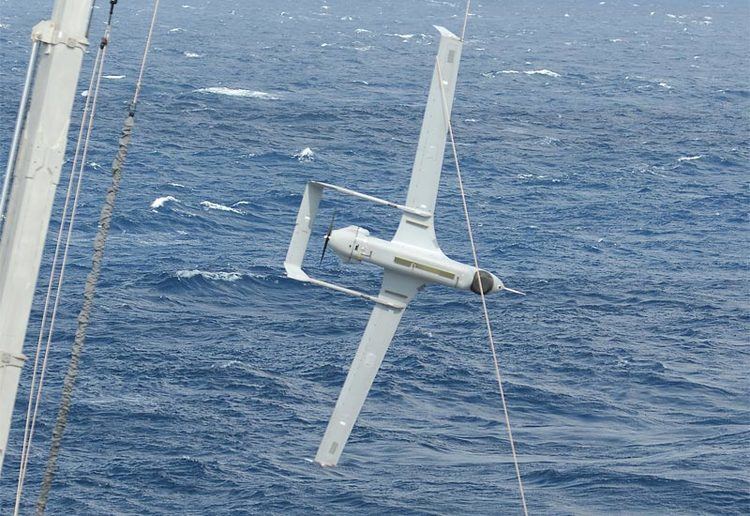 | ||
Manufacturers Boeing Defense, Space & Security, Insitu Similar AAI RQ-7 Shadow, Boeing Insitu ScanEagle, Northrop Grumman MQ-8C Fire Scout, General Atomics MQ-9 Reaper | ||
The Boeing Insitu RQ-21 Blackjack, formerly called the Integrator, is an American unmanned air vehicle designed and built by Boeing Insitu to meet a United States Navy requirement for a small tactical unmanned air system (STUAS). It is a twin-boom, single-engine, monoplane, designed as a supplement to the Boeing Scan Eagle. The Integrator weighs 61 kg (135 lb) and uses the same launcher and recovery system as the Scan Eagle.
Contents
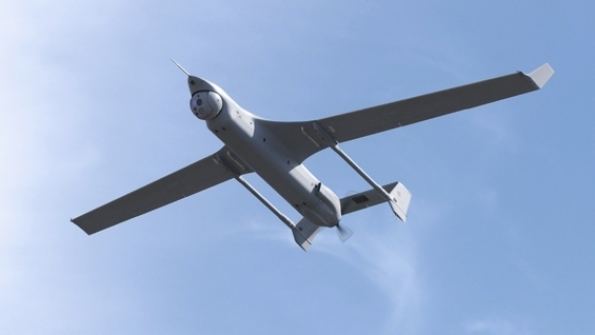
Development
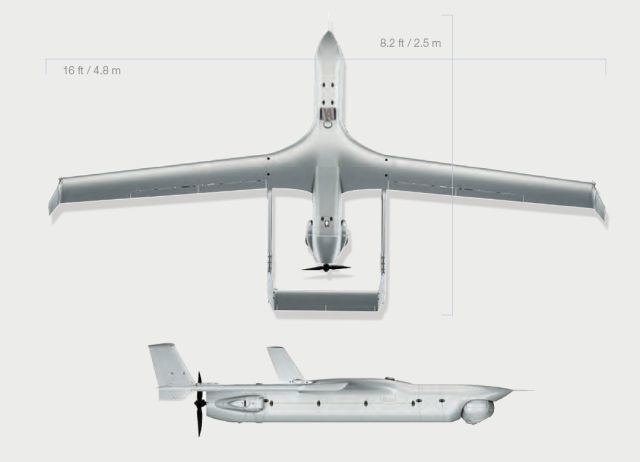
The RQ-21 was selected in June 2010 over the Raytheon Killer Bee, AAI Aerosonde, and General Dynamics/Elbit Systems Storm.

The RQ-21A Integrator first flew on 28 July 2012. On 10 September 2012, the Integrator entered developmental testing with a 66-minute flight. The Navy launched one using a pneumatic launcher and a recovery system known as Skyhook. This eliminates the need for runways and enables a safe recovery and expeditionary capability for tactical missions on land or sea. At the current testing rate, Initial Operational Capability (IOC) was expected in 2013.
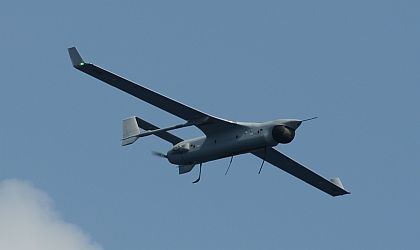
On 10 February 2013, the Integrator completed its first at-sea flight from the USS Mesa Verde, a San Antonio-class amphibious transport dock. This followed completing three months of land-based flights.
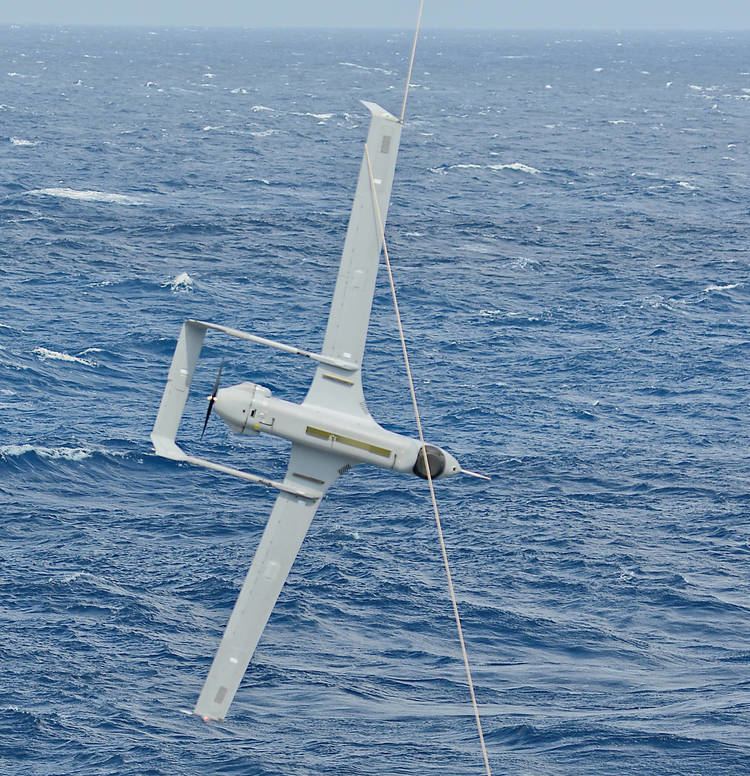
On 19 February 2013, Insitu completed the first flight of the RQ-21A Block II. It weighs 121 lb and flew for 2 hours. It was controlled by a new ground control system meant to integrate dissimilar UAV systems. The Block II has the sensor from the Nighteagle, the night version of the ScanEagle, and is designed to operate in high-temperature environments.
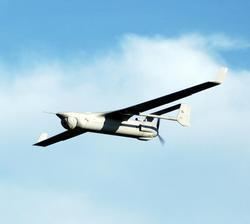
On 15 May 2013, the Department of the Navy announced that the RQ-21A Integrator received Milestone C approval authorizing the start of low rate initial production. With Milestone C approval, the Integrator entered production and deployment.
On 12 June 2013, the RQ-21A completed its first East Coast flight from Webster Field Annex, starting the next phase of tests for the Integrator. The UAV was launched with a pneumatic launcher, flew for 1.8 hours, and was recovered with an Insitu-built system known as the STUAS Recovery System (SRS), which allows safe recovery of the STUAS on land or at sea. This phase of testing was to validate updates made to the aircraft which include software, fuselage, and camera enhancements. The Integrator was test flown at lower density altitudes. Integrated Operational Test and Evaluation (IOT&E) was scheduled for October 2013.
In September 2013, the Integrator was renamed the RQ-21A Blackjack. On 28 November 2013, the U.S. Navy awarded Boeing Insitu an $8.8 million contract for one low-rate production aircraft in preparation for full-rate production.
In January 2014, the first low-rate production RQ-21A Blackjack began IOT&E for the U.S. Navy and U.S. Marine Corps. Testing was conducted over the next several months to demonstrate its effectiveness in realistic combat conditions. The Navy ordered three Blackjack systems in December 2014. By July 2015, the Navy had received two Blackjack systems.
In 2013, 2014, and 2015 the OSD issued program review reports on the RQ-21A. These reports sited quality and system capability issues that resulted in the system being described as not operationally effective, and missing the mark on several key requirements. These shortcomings have significanlty increased the program's allocation of available funding to engineering, rather than production.
Design
The RQ-21A Blackjack is designed to support the U.S. Marine Corps by providing forward reconnaissance. A Blackjack system is composed of five air vehicles and two ground control systems. The air vehicles can be launched on land or on a ship by a rail and land using a "skyhook" recovery system, where a vertical wire must be hooked onto its wing; when on the ground, the launch and recovery systems are towable by vehicles. Its wingspan is 16 ft (4.9 m) and it can carry a 39 lb (18 kg) payload. The day/night camera can achieve resolution rating of 7 on the NIIRS scale at 8,000 ft (2,400 m).
The Marines are working with Insitu to modify the Blackjack fuselage to carry greater and more various payloads. Enlarging the fuselage would increase its maximum takeoff weight from 135 lb (61 kg) to 145 lb (66 kg) and lengthen endurance from 16 hours to 24 hours. New turrets are being explored as well as other payloads including a synthetic aperture radar to track ground targets, a laser designator to mark targets for precision-guided munitions, and foliage-penetration capabilities for foreign customers operating in lush environments. The Office of Naval Research (ONR) plans to add a sensor to the Blackjack that combines an electro-optical camera, wide area imager, short wave infrared hyperspectral imager, and a high-resolution camera for use as an inspection sensor into a single payload by 2020.
Operational history
The U.S. Marine Corps deployed its first RQ-21A Blackjack system to Afghanistan in late April 2014. One Blackjack system is composed of five air vehicles, two ground control systems, and launch and recovery support equipment. It supports intelligence, surveillance, and reconnaissance (ISR) missions using multi-intelligence payloads including day and night full-motion video cameras, an infrared marker, a laser range finder, a communications relay package, and automatic identification system receivers. The models in Afghanistan were early operational capability (EOC) aircraft without shipboard software or testing. Deploying the aircraft on the ground was a way to catch and fix problems early on that could delay the project. The RQ-21 returned from its deployment on 10 September 2014 after flying nearly 1,000 hours in 119 days in theater. EOC Blackjacks will continue to be used for training, while completion of shipboard testing is planned to result in the system's first ship-based deployment in spring 2015.
The Marine Corps declared Initial Operational Capability (IOC) for the RQ-21A Blackjack in January 2016. During the summer of 2016, MARSOC deployed the RQ-21A to Iraq.
Full rate productions of the RQ-21A has been delayed because of serious system quality issues. The Office of the Secretary of Defense (OSD) issued reviews on the program in 2013, 2014, and 2015. The 2015 report indicates that many of these issues have not been resolved, despite OSD reporting issues in previous years. The 2015 report stated that the RQ-21A was "not operationally effective", "not operationally suitable", that the "system has exploitable cyber security vulnerabilities, and the overall assessment pointed out several major requirements failures.
Operators
An unidentified Middle Eastern customer purchased six systems.
Specifications
Data from Product Page
General characteristics
Performance
